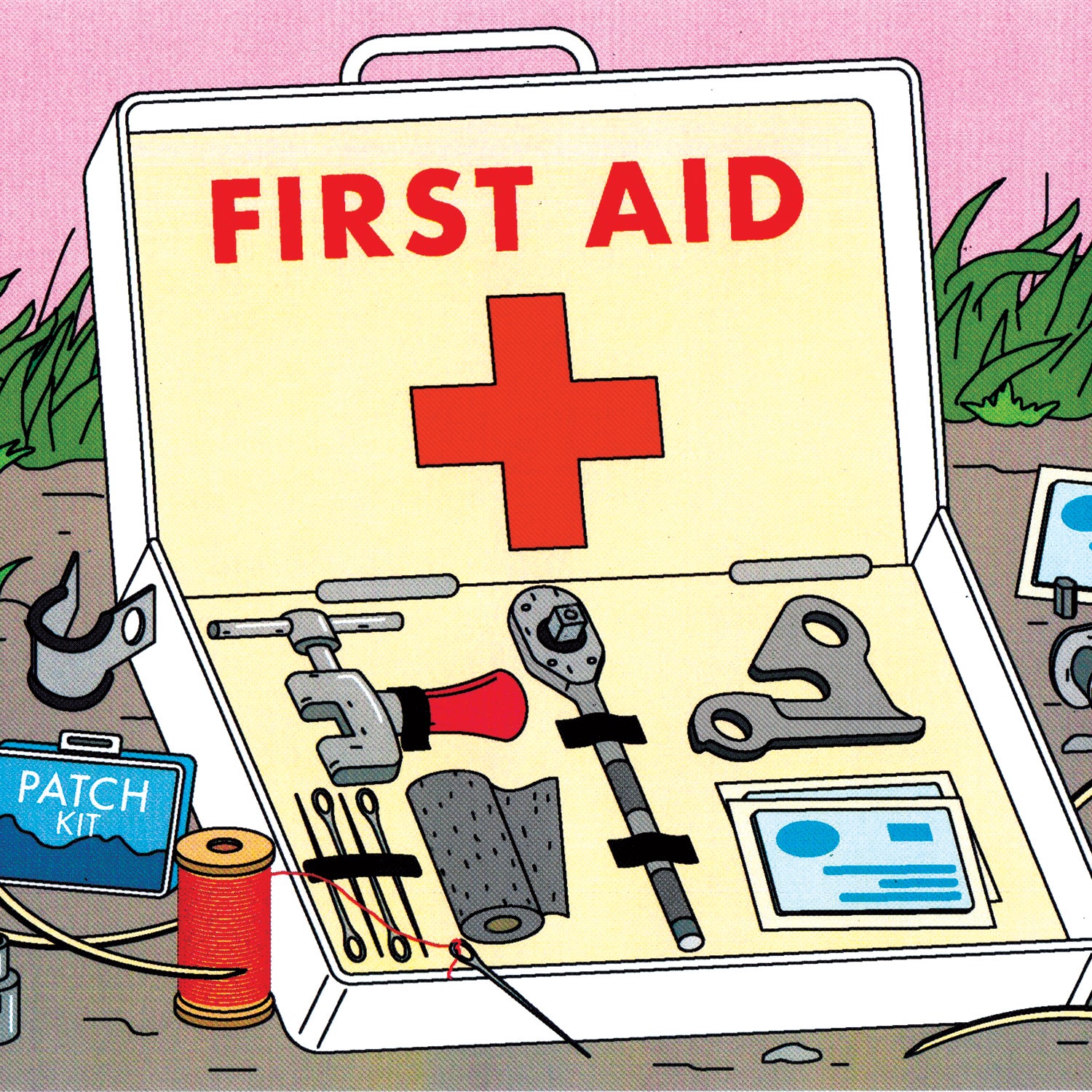1. Mend a Busted Frame
A crack in metal tubing is usually easy to spot. Carbon fiber is trickier, says Brady Kappius, owner of the frame-repair shop in Boulder, Colorado. Push on the suspect area, feeling for soft spots. You can also tap along the tube: healthy carbon sounds hollow, not dull.
The Fix: Kappius recommends ($10), which is small enough to keep in your repair kit. Wet the fiberglass tape to activate the resin, then wrap your frame and wait 15 minutes for it to cure. The weld should hold up even on bumpy terrain, but as with all of these fixes, it’s a temporary solution to get you back to the car or trailhead.
2. Patch a Torn Sidewall
Sidewall tears are often too big for sealant or tubeless plugs. Tire boots—thick rubber patches—will hold together most gashes, but if the rip is large and ragged, the tube may bulge through.
The Fix: Steve Fassbinder, cofounder of , a Mancos, Colorado, outfitter that leads bikepacking tours, brings along a sewing needle and sturdy thread to stitch a rip closed (like you would on apparel) for the ride home.
3. Bypass an Exploded Rear Derailleur
To start, check which part failed. Modern derailleur hangers are designed to break first, saving the expensive bits. (Consider keeping a spare in your pack.)
The Fix: If the derailleur itself is broken, temporarily convert your bike into a singlespeed. First, remove the broken derailleur. Run the chain over the cassette cog that’s directly in line with the chainring. Trim the chain with a chain tool to fit that gearing and use a quick link to connect the ends. Then lock out any rear suspension or walk bumpy sections. (Rear suspension lengthens the chain as it compresses; without a derailleur, the force can cause the chain to snap.)
4. Raise a Blown Dropper Seatpost
A dropper post is great in technical terrain, but hydraulic systems can be fragile and fussy, leaving you with a sunken seat.
The Fix: If your dropper won’t stay in the extended position, try disconnecting the remote lever to let the cable move freely. Then raise the whole post to put your saddle at or close to normal height. (This will probably work only with a long-travel dropper, 150 millimeters and up—don’t exceed the minimum insert line.) Alternatively, lift the dropper to the full extension and tighten a rubberized hose clamp—three-quarter-inch covers most diameters—on the slider just above the base section.
5. Ride with a Broken Handlebar
When a carbon bar breaks, overtightened bolts (say, for a brake lever) are usually to blame. Avoid this by investing in a torque wrench. If it happens, though, you can usually ride out with some simple adjustments.
The Fix: Remove the grip from the affected side of the handlebar, and reposition the shifter and brake lever a few inches in from the break. Slide the grip back on to cover any sharp edges. Go easy: you’ll have to walk technical sections.


